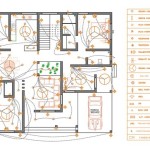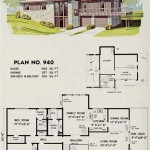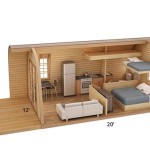Housing Master Plan Design
A Housing Master Plan serves as a comprehensive roadmap for the development and management of housing within a specific area, whether a municipality, region, or even a large-scale development project. It provides a strategic framework that guides decision-making related to housing policy, land use, infrastructure development, and community amenities. The plan typically addresses both current housing needs and projected future demands, considering factors such as population growth, demographic shifts, and economic trends.
The design of a Housing Master Plan involves a multi-faceted process that requires careful analysis, community engagement, and expert input. It begins with a thorough assessment of the existing housing stock, identifying strengths, weaknesses, and areas for improvement. This assessment often includes an inventory of housing types, conditions, affordability levels, and accessibility features. Data on demographics, household size, income levels, and housing preferences are also collected and analyzed to understand the existing and future housing demand.
A key component of the master planning process is community engagement. Public forums, surveys, and stakeholder meetings provide valuable insights into community priorities, concerns, and aspirations related to housing. This participatory approach ensures that the plan reflects the needs and desires of the people it will ultimately serve. Engaging diverse stakeholders, including residents, developers, community organizations, and local businesses, helps to build consensus and support for the plan's implementation.
Following the assessment and community engagement phases, the plan's vision and goals are established. These goals typically address a range of housing-related issues, such as increasing housing affordability, promoting diverse housing options, improving housing quality, and enhancing neighborhood livability. Specific objectives and targets are set to measure progress towards achieving these goals. For example, a plan might aim to increase the supply of affordable housing units by a certain percentage within a specified timeframe.
The Housing Master Plan then outlines specific strategies and actions to achieve its stated goals. These strategies may include zoning amendments, land use regulations, density bonuses, incentives for developers, and investments in infrastructure and community facilities. The plan may also address strategies for preserving existing affordable housing, promoting mixed-income developments, and addressing homelessness. Financial feasibility studies are often conducted to assess the viability of proposed strategies and identify potential funding sources.
Land use planning is an integral part of Housing Master Plan design. The plan identifies suitable locations for future housing development, considering factors such as proximity to jobs, transportation, schools, and other amenities. It also addresses issues of density, building heights, and architectural design guidelines to ensure compatibility with the surrounding environment and neighborhood character.
Infrastructure planning is another critical aspect. The plan assesses the capacity of existing infrastructure, such as water, sewer, and transportation systems, to support future housing growth. It may recommend upgrades or expansions to accommodate increased demand. Considerations for sustainable infrastructure development, such as green building practices and energy efficiency, are often incorporated.
The Housing Master Plan also addresses the provision of community amenities and services. Parks, open spaces, recreational facilities, and community centers contribute to the quality of life for residents. The plan may identify areas where new amenities are needed and propose strategies for their development and maintenance. Access to essential services, such as healthcare, education, and childcare, is also considered.
Implementation of the Housing Master Plan requires ongoing monitoring and evaluation. Regular progress reports track the achievement of objectives and identify any challenges or obstacles. The plan may be revised and updated periodically to reflect changing conditions, community needs, and emerging best practices. Adaptive management strategies allow for flexibility and responsiveness to unforeseen circumstances.
Collaboration and coordination among various stakeholders are essential for successful implementation. This includes government agencies, developers, community organizations, and residents. Clear communication channels and mechanisms for conflict resolution are crucial for ensuring effective collaboration. A dedicated housing department or agency may be responsible for overseeing the plan's implementation and coordinating efforts across different sectors.
Funding mechanisms are a critical component of the Housing Master Plan. The plan identifies potential funding sources for various housing initiatives, such as government grants, tax credits, and private investment. Financial strategies may involve leveraging public funds to attract private investment and creating innovative financing models for affordable housing development. Long-term financial sustainability is a key consideration in the plan's design.
Legal and regulatory frameworks are also essential for implementing the Housing Master Plan. Zoning ordinances, building codes, and other regulations must be aligned with the plan's objectives. Legal mechanisms may be necessary to enforce compliance and ensure that development projects adhere to the plan's guidelines. Regular review and updates of legal frameworks are necessary to adapt to evolving housing needs and market conditions.

Residential Housing Master Plan Concept Google Search Urban Design Site Landscape Architecture

96 个residential Master Plan 点子

The Highlights Of Master Plan Are New Housing Blocks On South Scientific Diagram

Residential Master Planning

Master Plans Residential Planning

Master Plan Left View Of One Possible Housing Configurations Scientific Diagram

Dongjiang Harbor Master Plan Hao Archiland Archdaily

Tiain Xin He Housing Master Plan Sunco Investment Inc Moore Ruble Yudell Architects Planners

Approach For Creating An Effective Master Plan Carleton Collins Architecture

Ou S Freshman Housing Master Plan Renderings Oudaily Com
Related Posts








